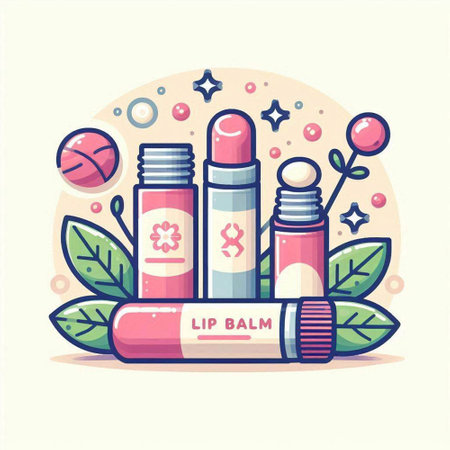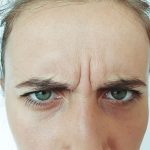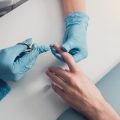Understanding Hooded Eyes: What Does It Mean?
Before diving into the best non-surgical eyelift procedures for hooded eyes, it’s important to really understand what hooded eyes are and why they happen. Hooded eyes are characterized by a fold of excess skin that droops over the natural crease of the upper eyelid, sometimes even covering the lash line. This feature can make your eyes appear smaller or less awake compared to other eye shapes like almond or round eyes.
So, why do some of us have hooded eyes while others don’t? The answer often starts with genetics. If you look around at family photos, you might notice that this eye shape runs in the family—thanks, Mom and Dad. But genetics isn’t the only factor. As we get older, especially here in the US where busy lifestyles and a lot of screen time are common, our skin naturally loses its elasticity. Collagen production slows down, and gravity does its thing, causing more pronounced hooding as we age.
Lifestyle choices also play a role. Sun exposure (think long days out at ball games or hiking), smoking, poor sleep habits, and even stress can speed up the process. All these factors contribute to the development or deepening of hooded eyes over time. Unlike other eye shapes that keep their crease visible regardless of age or lifestyle, hooded eyes tend to evolve—sometimes subtly, sometimes dramatically—based on how we live our lives.
2. Why Go Non-Surgical? The Appeal and Advantages
If you’ve ever caught yourself staring at your hooded eyelids in the mirror and wondered if there’s a way to refresh your look without going under the knife, you’re definitely not alone. Across the U.S., non-surgical eyelift procedures have exploded in popularity—and for good reason. Americans are increasingly drawn to these less invasive options, seeking results that fit into their busy lifestyles and budgets, all while minimizing risks.
Minimal Downtime: Back to Life, Fast
For most of us, taking weeks off for recovery isn’t practical. Non-surgical eyelifts offer the chance to get back to work, family, or even hit the gym within a day or two. As someone who values both his career and social life, I found this flexibility game-changing compared to traditional surgery.
Key Benefits Comparison
| Factor | Non-Surgical Eyelift | Surgical Eyelift (Blepharoplasty) |
|---|---|---|
| Downtime | Minimal (hours to 1-2 days) | 1-2 weeks or more |
| Cost | $200–$2,000 (per session) | $3,000–$6,000+ |
| Risks | Low (swelling, minor bruising) | Higher (scarring, infection, anesthesia) |
| Pain/Discomfort | Mild, usually topical numbing only | Moderate; requires local/general anesthesia |
| Results Timeline | Immediate to several days/weeks | Several weeks for final results |
The American Perspective: Real-Life Stories
I recently spoke with Jake, a 41-year-old dad from Texas: “I wanted something subtle—just enough so I didn’t look tired all the time on Zoom calls. The non-surgical route meant I could go in on a Friday and be out with my kids at soccer practice that weekend.” His story isn’t unique. Many Americans choose these procedures because they deliver noticeable improvements with minimal interruption to daily life.
A Cost-Conscious Choice
Let’s face it: elective surgery is expensive. With non-surgical options like laser treatments or injectable fillers, you can see results at a fraction of the price. That’s a big deal when balancing family expenses and personal care. Plus, many clinics offer payment plans or package deals that make these treatments even more accessible.
The bottom line? For those of us looking for subtle yet meaningful changes—without committing to surgery—non-surgical eyelift procedures check all the right boxes. It’s no wonder more Americans are skipping the scalpel and embracing these modern solutions for hooded eyes.

3. Top Non-Surgical Eyelift Procedures (with US Trends)
If you’re looking to refresh your look without going under the knife, the US aesthetics scene is packed with innovative options for hooded eyes. Let’s break down the top non-surgical eyelift procedures that are trending across America, complete with real patient experiences and well-known brands leading the charge.
Botox: The Tried-and-True Favorite
Botox is a household name in the States, and for good reason. With a few quick injections—often using trusted brands like Allergan’s BOTOX® Cosmetic—patients report a subtle lift in their brows and upper eyelids. The treatment relaxes the muscles that pull the brow downward, creating a more open-eyed appearance. Most people I talked to described feeling more awake and refreshed just days after their session, without any downtime.
Dermal Fillers: Volume and Lift
When it comes to fillers, American clinics often use JUVÉDERM® or Restylane®, both FDA-approved lines. Injecting small amounts near the brow bone can help lift sagging lids and smooth out hollow areas around the eyes. Based on firsthand accounts, patients love how natural the results look—and how fast they see improvement. Plus, it’s a lunchtime procedure, so you can get back to work or errands right away.
Plasma Pen: Cutting-Edge Tightening
The plasma pen has become a buzzword in medspas from New York to LA. This device delivers controlled micro-injuries to stimulate collagen production, tightening loose skin above the eyes. Brands like PlasmaMD are popular among US providers. Patients often describe mild swelling for a few days but rave about seeing noticeably lifted lids within weeks—no scalpel required.
Laser Treatments: Precision Resurfacing
Lasers like Fraxel® and CO2RE® are go-tos for those wanting skin tightening and texture improvement around the eyes. American dermatologists use these devices to gently resurface and contract eyelid skin, reducing droopiness. From what I’ve seen and heard, most people notice smoother lids after one or two sessions, though there’s usually some redness during recovery.
Thread Lifts: Instant Mechanical Lift
Thread lifts aren’t just for the jawline anymore—brands such as NovaThreads and Silhouette InstaLift are offering minimally invasive solutions for eyelid sagging. The threads physically lift and support tissue while stimulating new collagen over time. Patients tell me they appreciate seeing an immediate difference after their appointment, with results improving over several months.
Each of these non-surgical procedures is widely available across the US, reflecting a growing trend toward effective yet convenient options for hooded eyes. Whether you’re looking for instant results or gradual improvements, there’s likely an approach—and a local provider—that fits your lifestyle.
4. What to Expect: Results and Recovery
If you’re considering non-surgical eyelift procedures for hooded eyes, you’re probably wondering what the whole experience is really like. Let’s get real—these treatments aren’t magic wands, but they can deliver impressive results with far less hassle than going under the knife. Here’s a breakdown of what it feels like to go through these procedures, typical recovery times, and how the outcomes stack up against surgery. I’ve also included firsthand accounts and customer reviews so you know exactly what to expect.
The Experience: What It Feels Like
Most non-surgical eyelift options, like Botox, dermal fillers, laser treatments, or radiofrequency therapy, are done in a med spa or dermatologist’s office. Here’s how each one usually feels:
| Treatment | Sensation During Procedure | Pain Level (1-10) |
|---|---|---|
| Botox | Quick pinpricks, mild stinging | 2-3 |
| Dermal Fillers | Slight pressure, occasional pinch | 3-4 |
| Laser Treatments (e.g., CO2) | Warmth, snapping feeling, numbing cream used | 4-6 |
| Radiofrequency/Laser Devices | Warmth or tingling; numbing gel often applied first | 2-4 |
I’ve tried Botox for my hooded eyes and honestly, it felt like a few mosquito bites—over before I could psych myself out. A friend who did fractional laser said it was more intense but bearable thanks to the numbing cream.
Downtime & Recovery: Back to Life Fast
This is where non-surgical options shine. Most people walk out of the office looking presentable—maybe a little red or puffy if you did lasers or fillers, but nothing sunglasses can’t cover. Here’s a quick look at typical downtime:
| Treatment | Downtime (Days) | Common Side Effects |
|---|---|---|
| Botox | 0-1 | Mild redness or swelling at injection site |
| Dermal Fillers | 0-2 | Slight bruising or swelling possible for 24-48 hours |
| Laser Treatments (CO2/Erbium) | 3-7 | Redness, peeling, light scabbing possible for up to a week |
| Radiofrequency/Laser Devices (non-ablative) | 0-1 | Mild redness or puffiness for several hours after treatment |
Customer Voices: Real Reviews from the U.S.
“I had Botox for my hooded lids on a Friday afternoon. I went back to work right after—no one even noticed except me! The lift was subtle but made me look so much more awake.” — Mike, 41, Dallas TX
“I tried Fraxel laser for my droopy upper lids. The first three days were rough—I looked sunburned and had some peeling. But by day five I was back at the gym and people kept asking if Id been on vacation!” — Samira, 35, San Diego CA
“Fillers gave me instant results. There was some swelling for two days but nothing major. No surgery scars and way less risk.” — Johnathan, 46, Boston MA
Surgical vs Non-Surgical: How Do Results Compare?
| Procedure Type | Lifting Effectiveness | Longevity of Results | Main Pros | Main Cons |
|---|---|---|---|---|
| Surgical Blepharoplasty | High—can remove excess skin completely | 5-10 years or permanent | Dramatic results; one-time procedure | Surgical risks; scars; weeks of downtime |
| Non-Surgical Eyelift (Botox/Fillers/Laser) | Mild to moderate—great for early signs of aging | BOTOX: 3-4 months; Fillers: 6-12 months; Laser: 1+ year with maintenance | No scars; low risk; minimal downtime | Need repeat treatments; not as dramatic as surgery |
The bottom line? Non-surgical eyelift procedures are ideal if you want noticeable improvement without committing to surgery and recovery. They’re quick fixes that fit into a lunch break—and based on both my own experience and others’, most guys and gals in the States say they’d do it again in a heartbeat.
5. Finding a Qualified Provider in the States
When it comes to getting the best non-surgical eyelift procedures for hooded eyes, picking the right provider is half the battle. In America, you’ve got endless choices—medspas on every corner, dermatologists with shiny offices, and plastic surgeons with Instagram-perfect before-and-afters. But don’t let the options overwhelm you; here’s what I learned from my own experience and digging deep into the process.
Tips for Locating Reputable Providers
First things first: always start by searching for board-certified professionals. For dermatologists, look for certification from the American Board of Dermatology. For plastic surgeons, make sure they’re certified by the American Board of Plastic Surgery (ABPS). Medspas can be trickier—only trust those overseen by a licensed physician who specializes in aesthetics.
Do Your Homework
I recommend checking out reviews on Google, RealSelf, and Yelp. Pay attention to both glowing testimonials and consistent complaints. Don’t just fall for flashy social media accounts—a well-curated Instagram doesn’t guarantee skill or safety.
Credentials Matter
Always confirm that your provider has up-to-date licenses and certifications displayed openly in their office or listed on their website. Ask about their experience specifically with non-surgical eyelifts for hooded eyes—not just general injectables or laser treatments. A reputable provider won’t hesitate to walk you through their training or show before-and-after photos of real patients (with permission).
Red Flags to Watch Out For
If a deal seems too good to be true, it probably is. Steer clear of places that offer heavy discounts or “one-day only” specials—quality care isn’t cheap. Be wary if staff seem rushed, refuse to answer questions, or try to upsell you aggressively. And absolutely avoid any provider who promises unrealistic results or downplays potential risks.
The Bottom Line
Your eyes are worth the effort—take your time researching and consult with more than one specialist if needed. Remember: in the States, credentials and reputation are everything when it comes to safe and effective non-surgical eyelift procedures for hooded eyes.
6. Costs, Longevity, and Maintenance
When considering non-surgical eyelift procedures for hooded eyes, it’s important to weigh not just the results, but also the financial commitment, how long those results last, and what kind of upkeep you’ll be signing up for. Here’s a breakdown based on my own research and personal experience in the States.
Average Price Points Across America
Let’s get real: these treatments aren’t cheap, but they’re still way less than going under the knife. Botox or other neuromodulators generally run between $300–$600 per session in most American cities. Dermal fillers—like those hyaluronic acid injections that lift the brow area—typically range from $600–$1,200 per syringe. Radiofrequency treatments (think Thermage) and ultrasound options like Ultherapy are pricier up front, usually falling anywhere between $1,500–$3,500 depending on your provider and location. Laser resurfacing sessions can cost from $1,000 to over $2,500 each.
How Long Do Results Last?
This is where things get interesting—and sometimes frustrating. Botox results around the brows usually stick around for 3–4 months before you need another round. Fillers last longer; most patients see results hold up for 9–18 months depending on their metabolism and the product used. Devices like Thermage or Ultherapy promise effects that can stick for 12–24 months, but some people notice subtle tightening even after that window. With lasers, you might see improvements lasting a year or more, especially if you maintain good sun protection.
Maintenance: What to Expect
If you’re anything like me, keeping up with appointments might feel like just another thing on your calendar—but it’s key if you want to keep looking fresh. Botox touch-ups every few months are the norm. Fillers require less frequent visits but might need tweaking as your body gradually absorbs them. Energy-based treatments like Thermage or Ultherapy usually suggest annual maintenance sessions. And with lasers, dermatologists often recommend a series of initial treatments followed by maintenance once or twice a year. Plus, don’t forget about daily skincare—using sunscreen and quality eye creams will help maximize your investment.
The Bottom Line
Non-surgical eyelift options offer flexibility in both pricing and commitment level compared to surgery. While none of these solutions are permanent, with regular upkeep and a realistic budget, you can maintain brighter, more youthful-looking eyes without ever setting foot in an operating room.
7. At-Home Alternatives and Lifestyle Hacks
If you’re not ready to book an in-office procedure just yet, there are plenty of at-home options and simple lifestyle tweaks that can make a real difference for hooded eyes. Let’s talk about what actually works—stuff you can find right here in the US, and habits that go beyond marketing hype.
Eye Creams and Serums
Let’s be honest: no topical cream will physically lift your eyelids overnight, but certain ingredients can help with puffiness, fine lines, and skin firmness. Look for US-available products packed with caffeine (like The Ordinary Caffeine Solution 5% + EGCG), peptides (Olay Eyes Firming Eye Serum is a solid choice), or retinol for gentle resurfacing (try RoC Retinol Correxion Eye Cream). Consistency is key—I apply my eye serum morning and night, and I’ve noticed less sagging over time.
Eyelid Tapes and Strips
If you want instant results without needles or downtime, eyelid tapes are surprisingly effective. Brands like LIDS BY DESIGN or Eye Charm are easy to find online or at major retailers. These thin strips are basically invisible once applied, and they give your lids a subtle lift that lasts all day. I keep a pack in my bathroom drawer for special occasions or photo days—they really do work when you need that extra boost.
Lifestyle Habits That Support Eyelid Health
- Prioritize Sleep: Getting 7–8 hours every night helps minimize fluid retention around the eyes.
- Stay Hydrated: Drinking enough water keeps your skin plump and resilient.
- Wear Sunglasses: UV exposure accelerates skin aging; sunglasses are non-negotiable for me whenever I step outside.
- Avoid Rubbing Your Eyes: It’s tempting, but rubbing can break down delicate eyelid skin over time.
A Final Word on At-Home Care
No single product or hack will completely transform hooded eyes, but combining these at-home alternatives with healthy habits absolutely makes a difference. The bottom line? Start with what fits your daily routine, stay consistent, and don’t underestimate the power of small changes—they add up faster than you think.

